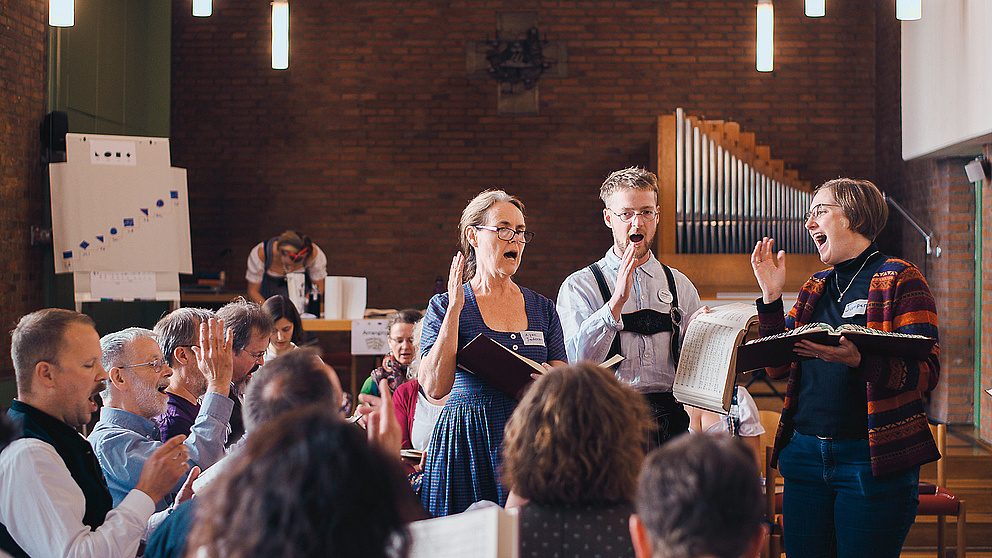Jump to the content
- {{#headlines}}
- {{title}} {{/headlines}}

JUNIPER LYNN HILL
Professor Dr Juniper Lynn Hill from the United States holds the Chair in Ethnomusicology at the University of Würzburg. In 2007/2008, she was a Humboldt Research Fellow in Bamberg. In May 2021, she was selected as a scout for the Humboldt Foundation’s Henriette Herz Scouting Programme.
In the picture you can see me (on the right) at a shape-note singing session in Munich – pre-Corona when collective singing was still the norm. Shape-note singing is a tradition that is particularly widespread in the southern states of the US. It derives from “The Sacred Harp”, a tune book dating back to 1844. The noteheads are written in the form of triangles, squares, circles or diamonds, which are supposed to make it easier to sight-read even without any musical training. A very egalitarian approach in my opinion: the aim is not to perform perfect concerts but to enjoy singing with others from the bottom of your heart. And this means that instead of facing the audience, you face one another in a square according to whether you are a soprano, alto, tenor or bass.
I am an ethnomusicologist. Music helps me to understand societies and human experience better. Looking through the musical window gives me a more profound insight into how the people affected experience global phenomena like climate change, migration or political unrest. And I am convinced that we can only grasp other cultures’ musical traditions if we experience them ourselves. When I became a professor in Würzburg in 2017, I therefore decided to develop a course with a practical module. Shape-note singing was the first course I organised. There are also courses on African and Arab music, and we have even had Franconian folk music.
I myself first encountered shape-note singing during my studies in the United States. When I then went to Ireland in 2009, I offered a course at the university there and it was a great success. In Ireland, a real movement grew up. We met everywhere to sing, even in pubs. We shape-note singers get together for whole days or weekends for conventions, sometimes with more than 100 people. Not during the Corona pandemic, of course. If possible, we sing outdoors in smaller groups. We’ve also tried singing together online, but that is quite difficult because of minimal time delays. Sometimes, just one person sings aloud while everyone else mutes themselves and sings along. It is not ideal, but better than nothing!
In my research, I also study the social and cultural factors that influence creativity. In shape-note singing, I regularly observe that it is more important to sing with a full voice than to hit every note properly. That takes away the fear; the joy of singing is what counts and people feel freer to express themselves. For me, that is a key to creativity.

